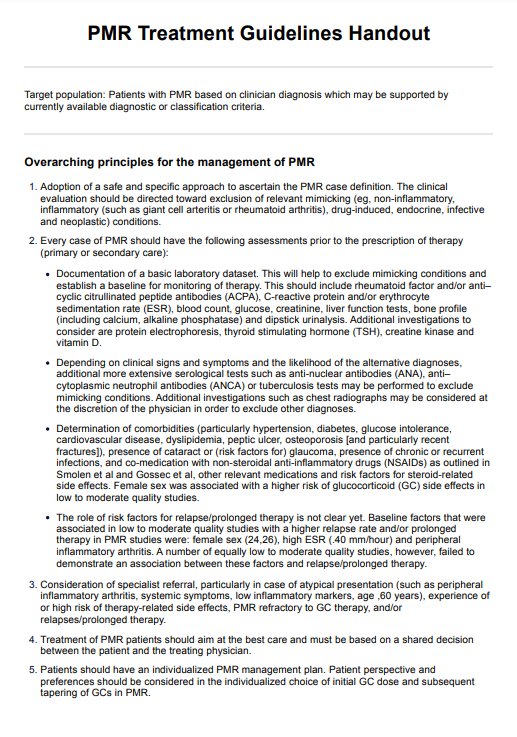The best treatment for polymyalgia rheumatica (PMR) is corticosteroids, with oral prednisone being the most commonly prescribed. These medications effectively reduce inflammation and alleviate symptoms.

PMR Treatment Guidelines Handout
Learn more information about treating polymyalgia rheumatica (PMR) with our free PMR Treatment Guidelines Handout.
Use Template
PMR Treatment Guidelines Handout Template
Commonly asked questions
The duration of prednisone treatment for PMR typically ranges from 6 months to 2 years, depending on the patient's response and tapering process. Regular monitoring by a healthcare professional is essential to adjust the dosage appropriately.
Methotrexate is often used as a steroid-sparing agent for patients who cannot tolerate prednisone or require prolonged therapy. It helps reduce the need for corticosteroids while managing symptoms.
EHR and practice management software
Get started for free
*No credit card required
Free
$0/usd
Unlimited clients
Telehealth
1GB of storage
Client portal text
Automated billing and online payments











